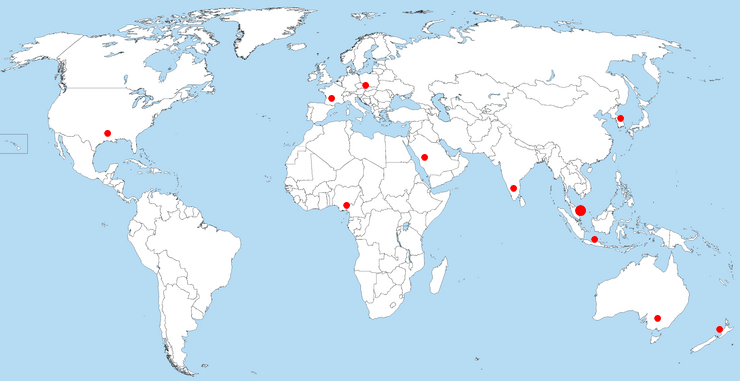Energy Efficiency in Academic Buildings Through Optimization and Operational Strategies
Keywords:
Energy efficiency, energy savings, air-conditioningAbstract
Electricity consumption in commercial buildings needs serious and particular attention due to current situation of increased world fuel prices. This paper presents the potential savings in order to achieve energy efficiency in academic building through optimization and operational strategies. This study also helps to identify the energy savings gap within the building through energy saving measures and application of renewable technologies. There are three main components that have been selected as the subjects of investigation, i..e., the cooling equipment, lighting and electrical appliances. A number of existing analytical tools such as ASHRAE CLTD/CLF, lumen method, net present value and benefit cost ratio have been adopted during the course of conducting this research. The results showed that the usage of air-conditioning, lighting and electrical appliances can be reduced by 12%, 52% and 40%, respectively when all the energy saving measures were in place and implemented.References
Sukri A., Yusri M., Abdullah H., Rahman H.A., Majid M.S. and Bandi, M. 2012. Energy Efficiency Measurements in a Malaysian Public University. 2012 IEEE International Conference on Power and Energy (PECon), Kota Kinabalu, Malaysia.
Hassan J.S., Zin R.M., Majid M.Z., Balubaid S. and Hainin M.R., 2014. Building Energy Consumption in Malaysia: An Overview, Jurnal Teknologi, 70(7): 33-38.
Berarfi U., 2015. Building Energy Consumption in US, EU and BRIC Countries. Procedia Engineering, 118: 128-136.
Sorrell S., 2015. Reducing Energy Demand: A Review of Issues, Challenges and Approaches, Renewable and Sustainable Energy Reviews, 47: 74-82.
Gul, M. S. and Patidar, S. Understanding The energy consumption and occupancy of a multi-purpose academic building. Energy and Buildings, 2015. 87: 155-165.
Eaton R., Johnson M., 2015. A Study on Energy Efficiency in Enterprises: Energy Audits and Energy Management Systems Implementation of National Minimum Criteria for Energy Audits, In Line with Annex VI of The Energy Efficiency Directive, Ricardo Energy & Environment
Javied T., Rackow T. and Franke J., 2015. Implementing Energy Management System to Increase Energy Efficiency in Manufacturing Companies, Procedia CIRP, 26: 156-161.
Bhati A., Hansen M. and Chan C.M., 2017. Energy conservation through smart homes in a smart city: A lesson for Singapore households. Energy Policy, 104(December 2016): 230-239.
Boydak O., 2017. Commercial Buildings Energy Consumption Survey (CBECS) and Its Comparison with Turkey Applications, Journal of Clean Energy Technologies, 5(1): 69-72.
Spitler J. D., 2010. Load Calculation Applications Manual, ASHRAE Journal, 2: 349.
Burdick A., 2011. Strategy Guideline: Accurate Heating and Cooling Load Calculations, U. S. Department of Energy, Washington DC.
Recommended Light Levels (Illuminance) for Outdoor and Indoor Venues, National Optical Astronomy Observatory, https://www.noao.edu/education, 2011.
Malaysian Standards, MS 1597-2-40:2017, 2005. Household and similar electrical appliances -Safety - Part 2-40: Particular requirements for electrical heat pumps, air-conditioners and dehumidifiers, Second revision, IEC 60335-2-40:2013, MOD.
Mahlia T.M., Ng H.M., Olofsson T., Andriyana A. and Hasanuddin I., 2012. Energy and Cost Savings of Optimal Thickness for Selected Insulation Materials and Air Gaps for Building Wall in Tropical Climate, Energy Education Science and Technology Part A: Energy Science and Research, 29(1): 649-662.
Walraven D., Laenen B. and D'haeseleer W., 2015. Economic System Optimization of Air-cooled Organic Rankine Cycles Powered by Low-temperature Geothermal Heat Sources, Energy, 80: 104–113.
Downloads
Published
How to Cite
Issue
Section
License
Copyright of articles that appear in Jurnal Mekanikal belongs exclusively to Penerbit Universiti Teknologi Malaysia (Penerbit UTM Press). This copyright covers the rights to reproduce the article, including reprints, electronic reproductions or any other reproductions of similar nature.







